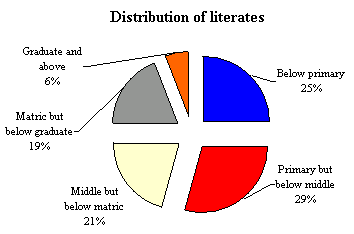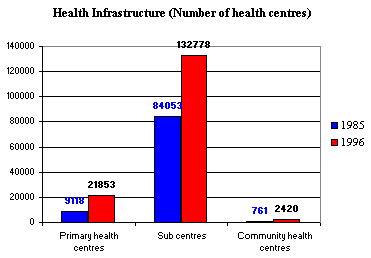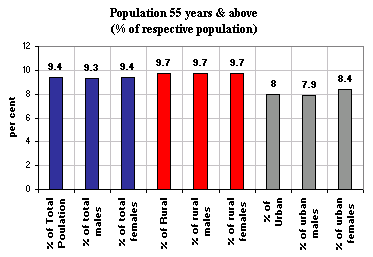|
In his maiden budget Union finance minister Jaswant Singh enunciated his 'panch priorities', or five priorities. The first one relates directly to the basic necessities of the common man, and includes poverty eradication and addressing the 'life time concerns', including health, housing, education and employment. It is here that he has taken the most positive steps in his budget. True, elections and political considerations must have been at the back of his mind. But there is no denying the fact that the finance minister has given public welfare the its long overdue importance.
Integrated approach to poverty alleviation
The first step is towards convergence and rationalisation of schemes on poverty alleviation. Rationalisation of all schemes addressing rural development, rural industries and artisans, and poverty alleviation in urban areas are currently addressed separately through various schemes in different ministries. Mr Singh has set up a committee headed by the deputy chairman, Planning Commission, which will examine all schemes having a bearing on poverty alleviation and rural development, and recommend their convergence. This step will result in a more focused and integrated approach towards poverty alleviation. Housing benefits to continue
The finance minister has retained the interest deduction under income tax up to Rs.1,50,000 for construction or purchase of a self-occupied housing property. In addition, he has proposed that income from housing projects for construction of residential units, of prescribed specification, approved by the local authorities up to 31 March 2005, will now be exempt from income tax. Thus, not only has the limitation with regard to the year of sanction, earlier frozen at 31 March 2001, now been extended, but the benefits of the scheme have also been made available irrespective of the year of completion. These steps make housing more affordable for the masses. Incentives for literacy
Mr. Singh has made education expenses up to Rs.12,000 per child for two children eligible for rebate under section 88 of the Income Tax Act. This is a positive step as government subsidy on education has rapidly reduced and made education an expensive affair. It also gives an indirect incentive for family planning by way of providing rebate only for two children. 
Major incentives for healthcare
Incentives to the private health care
In order to encourage new private hospitals and expansion of existing hospital facilities, the finance minister has proposed to extend the benefit of section 10(23 G) of the IT Act to such financial institutions as provide long-term capital to private hospitals with 100 beds or more. He has also increased the rate of depreciation from the present 25 per cent to 40 per cent in respect of life saving medical equipment. 
Making treatment affordable
Mr Singh has reduced customs duty on specified life saving equipment from 25 per cent to 5 per cent, and also exempted them from CVD (countervailing duty, which is an additional customs charge used to countervail, or neutralise, the effect of excise duties). In respect of life saving equipment already exempt from CVD, he has further exempted them from excise duty as well, so as to encourage indigenous manufacturers.
Further, life saving drugs currently attracting between zero and 5 per cent customs duty have also be exempt from excise duty. Basic customs duty on glucometers and glucometer strips used by diabetics has been reduced from 10 per cent to 5 per cent; they will be exempt from excise duty as well. Community based universal health insurance scheme
To improve access to good health services the public sector general insurance companies have been encouraged to design a community-based universal health insurance scheme during 2003-04. Under this scheme, a premium equivalent to Re.1 per day (or Rs.365 per year) for an individual, Rs.1.50 per day for a family of five, and Rs.2 per day for a family of seven, will entitle eligibility to get reimbursement of medical expenses up to Rs.30,000 towards hospitalisation, a cover for death due to accident for Rs.25,000, and compensation due to loss of earning at the rate of Rs.50 per day up to a maximum of 15 days. To make the scheme affordable to below-the-poverty line (BPL) families, the government has decided to contribute Rs.100 per year towards their annual premium. In the first phase, at least an additional 50 lakh BPL families will be covered during 2003-04. This is the first such scheme to provide healthcare coverage at a community level. Relief to disabled and handicapped
The government has taken major steps to provide monetary relief to the disabled and the handicapped. For income tax purposes, the physically handicapped, or persons with such dependents, have been entitled to a deduction for permanent physical disability of Rs.50,000, and an enhanced deduction of Rs.75,000 in case of severe disability. The finance minister has also reduced customs duty on hearing aids, crutches, wheelchairs, walking frames, tricycles, braillers and artificial limbs to 5 per cent without special additional duty (SAD). They will be exempt from CVD, and domestic manufacturers will also be exempt from excise duty. There is also a reduction in customs duty on parts of hearing aids and wheelchairs to 5 per cent without CVD and SAD. Senior citizens and pensioners
Increased tax rebate
Senior citizens and pensioners have been severely affected by the sharp fall in interest rates in the last two years. Keeping this in view, the finance minister has increased the tax rebate to senior citizens to Rs.20,000. As a result, their income up to Rs.1.53 lakh will henceforth become fully exempt from income tax. In the case of senior citizens on pension, the effective exemption limit may hereafter be actually higher, and become Rs.1.83 lakh, because of standard deduction. They can get further relief by taking advantage of the tax rebate available under section 88 of the IT Act.
Mr Singh has also saved them from future bureaucratic hassles by declaring that self-declarations filed by senior citizens will be accepted. Further there will be no deduction of tax at source from interest income, income from units, and such other sources for such citizens. 
Insurance pension scheme
The finance minister has asked the public sector Life Insurance Corporation of India to launch a special pension policy, guaranteeing an annual return of 9 per cent, in the form of a monthly pension scheme to provide relief to pensioners in the context of the declining rates of interest.
This scheme will be called: Varishtha Pension Bima Yojana, through which a pensioner, or any citizen above 55 years of age, could, on payment of a lump-sum amount, get benefits calculated at 9 per cent per annum. Any citizen above the age of 55 years will qualify for this scheme, and will get a monthly return in the form of a pension for life. Upon demise, the initial amount deposited will be returned to the spouse/nominee under the policy. The minimum and maximum monthly pensions proposed are Rs.250 and Rs.2,000 per month. This monthly pension will start from the month following the payment of the lump sum amount by the citizen. The government will reimburse the difference between the actual yield earned by the LIC from the funds invested under the scheme and its payout of 9 per cent.
Although the pension scheme looks attractive with a fixed 9 per cent return, it will compensate pensioners only to some extent as the maximum pension offered is too low at current price levels. A pensioner will have to pay a lump sum amount of Rs 2,66,667 to get a pension of Rs 2,000 per month.
Some people may argue that they can fetch a better return from the market. But, for retired pensioners, the security of a government scheme may be far more important than the tall, sometimes crooked, claims of private finance companies.
|